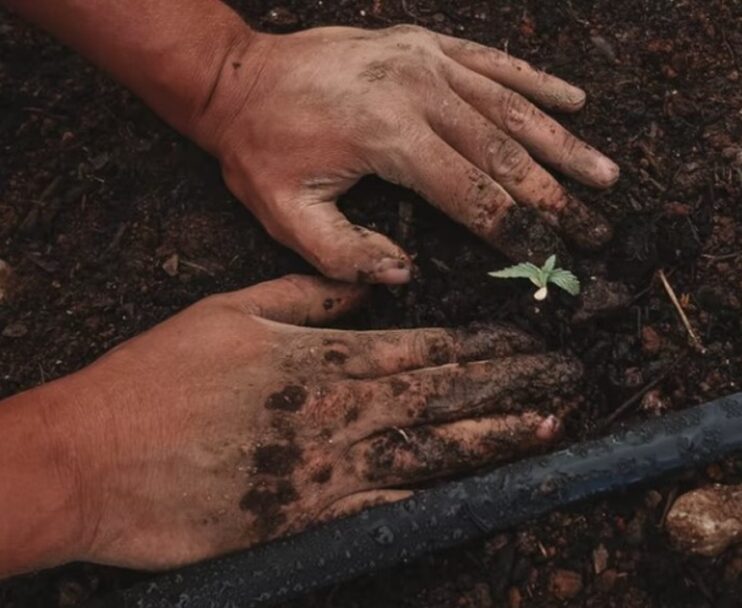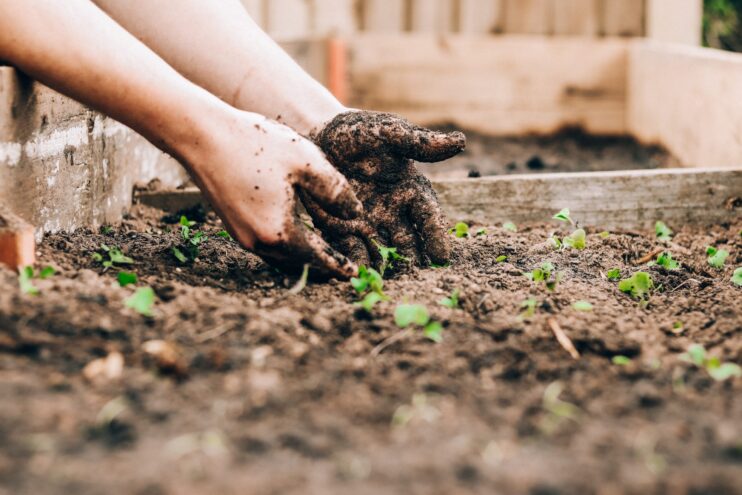We use affiliate links. If you purchase something using one of these links, we may receive compensation or commission.
So, you have a garden and you want to grow plants.
But, you don’t know how fast does a plant grow?
To know about plant growth and plants that grow in a week, keep reading this article.
In this article, we will be learning how much do plants grow in a week.
Then, we will be learning about some fast-growing vegetables that are used for home gardening.
Table of Contents
About gardening
Gardening teaches us about hard work, patience, and perseverance. There are no comparisons for happiness when one’s hard work gets converted to success.
Observing plant growth is one of the most satisfying things in the entire world.
Thus, gardening can be very difficult and at the same time very enjoyable.
If I say that gardening or plantation is the very beginning of human development, I would not be very wrong.
Learning cultivation is one of the earliest phases of human development and today, our life depends on plants. Simply, plants are a part of our life.
How many inches does a plant grow in a week?
This is the most asked question among new gardeners. On average, plants would grow from 0.8 inches to an inch in a week. But, the plant growth depends on various factors like quality of seed used, use of fertilizers, environment, and whether you are following proper gardening tips, ideas, and tools.
Like mentioned earlier, patience is always a key factor while gardening. Plant growth varies depending on the species of plants and the effort provided.
A research was conducted by Azizah Endut and teams about the growth of Mustard green and water spinach.
According to the research, the average growth per day was found to be 0.75 inches per day and 0.52 inches per day for water spinach and mustard green respectively.
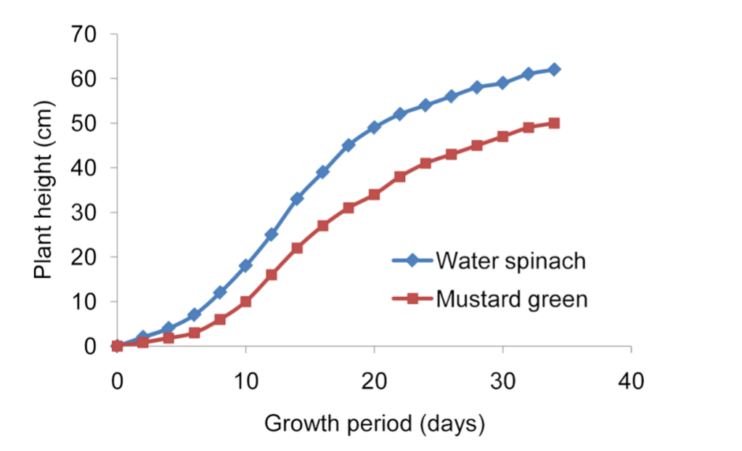
Here, the research was conducted maintaining proper conditions required by each plant.
From the graph, we can say that the growth of these two plants was significant between 10 – 20 days. These statistics are based on just two plants.
Moreover, a strawberry plant takes around 156.39 days on average to fully bear fruit. If you are interested in growing strawberries and their growth cycle, then check out our content on How long does Strawberries takes to grow?
Hence, the answer for “How many inches does a plant grow in a week?” can not be answered exactly. Most of the plant on average grows by about an inch every week. You need to have patience and nurture the plant like a mother would do to her children.
Till here, you should have some understanding about what to expect for the plant growth in a week.
You should also know that all plants do not grow at the same rate.
How to start a garden?
Starting a garden is not easy. Just like a mother nurture her children, a significant amount of effort, love, and caring is needed for the plant to grow healthy. You should have a great amount of patience and should show lots of effort for gardening.
I understand that lots of people love to garden. But simply wanting to garden a plant is not enough.
Some things are very necessary to be considered before you start gardening:
- Proper environment
- Good quality seeds
- Soil quality
- Tools
- Maintenance and others
Proper gardening ideas about the types of plants you want to garden are also necessary. So, before beginning to garden, you should be very careful about these things else the effort would be lost.
Fast-growing vegetables
Now, let’s discuss some of the common plants that are quick to grow and are commonly used in our kitchen:
Radishes
Do you remember a peppery flavor when eating pasta and salads?
Radishes can be one of the best options if you are considering home gardening. It requires significantly less area and can grow very easily.
They are one of the fastest-growing vegetables which takes about four weeks to reach harvest.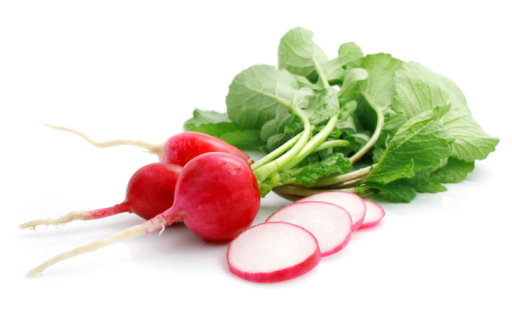
How to plant radish?
For sowing the seeds of radish, choose a ground that gets at least six hours of sun a day. You should sow the seeds very thinly to the ground.
How many inches apart do you plant radishes?
Well, this is one of the many questions that are asked when gardening.
Experts suggest that you should at least keep spacing of about an inch when sowing the seeds. You can also add radish as a companion plant to your other plants like onions, tomatoes, lettuces, spinach, and others.
Radish helps to draw pests away from their companion plants.
When to plant radish?
Raddish can properly grow at mid-temperature with an adequate amount of sunlight. You can plant this vegetable in two seasons.
So, if you are planning to plant radish in your garden, sow the seeds between early April to early May.
You can also plant it after the hot season ends – between early August to early September.
Salad leaves
What gives a salad crisp and ideal taste for livening up the meal times?
Salads leaves are the most versatile vegetable if you are planning to go for a diet or light food.
There are many benefits of salad leaves. They contain lots of vitamins, calcium, and fibers. They are also cholesterol-free and are very low in calories and sodium.
Salad leaves are very easy to grow indoors and require just about three weeks to harvest after sowing.
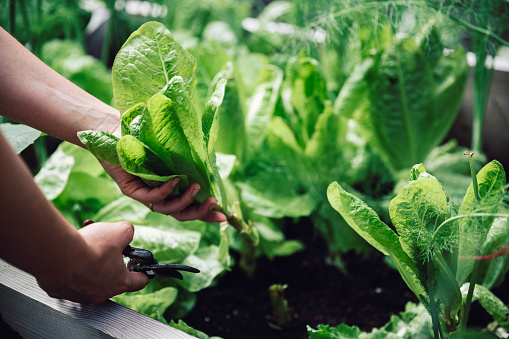
How to plant salad leaves?
For sowing the seed, you need to ensure that the soil is moisturized and contains organic matter.
When seeding, you need to make some shallow drills and sprinkle some seeds along the bottom. While watering the seed, make sure you do it gently.
Unlike radish, you need to leave enough space for the leaves to grow. Leave about 8 to 10 inches between the seeds while seeding.
When to plant salad leaves?
Salad leaves require proper watering and sunlight for growth. It is best if you start seeding from March and continue till September.
You can also plant salad leaves as a companion plant for corn, radish, carrot, beets, etc.
For planting salad leaves, there are lots of alternatives like grounds, containers, bags, and vegetable plots.
Mustard greens
Have you tried a peppery salad made up of raw mustard green with lemon juice, olive oil, and salt?
Mustard green is also known for Indian mustard, curly mustard, or peppery greens contains health-boosting antioxidants.
They are a great addition to your garden if you love those peppery flavors. It requires about 4 to 5 weeks to harvest after seeding.
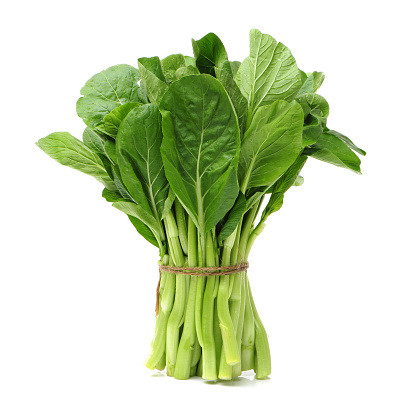
How to plant mustard green?
The process of seeding and harvesting this vegetable is much similar to that of salad leaves. You need to moisturize your soil before seeding.
Sow the vegetable seed in a raised beds, containers, or bags. You need to plant the seed half-inch deep into the ground.
If you are going to garden multiple plants: make sure that the seeding is done with a spacing of about 8 to 12 inches.
For harvesting, you can pick the outer grown leaves and leave the remaining to continue growing.
When to plant mustard green?
Mustard greens can be grown in cool seasons. They do not like heat.
They are easy to care for and can be easily grown in spring and fall. You can also plant mint, corn, peas, etc. along with this mustard plant.
Tomatoes
Have you ever seen tomatoes in other colors than red?
Tomatoes are one of the most common veggies used for cooking.
Tomatoes are not the fastest-growing plants like the aforementioned plants. But I have listed it here as it is very useful in cooking and makes the garden attractive.
They take roughly about 2 months to bear fruits from the time of planting seeds to the ground.
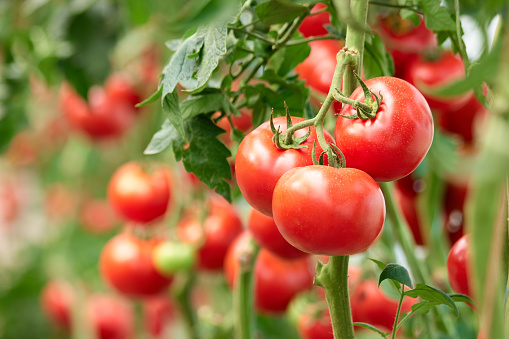
How to plant tomatoes?
Tomatoes can be sown in bags, pots, or hanging baskets.
For planting this vegetable in your garden, plant the seed deep into the soil and water the seedlings with a weak phosphorous fertilizer.
Then, you need to choose the support for the plant-like stakes or cages.
How many inches apart do you plant tomatoes?
So, if you are asking this question, then you already want to garden multiple tomato plants. Ideally, you have to separate each plant by about a meter distance for proper growth.
When to plant tomatoes?
Tomatoes require bright sunlight, sufficient water, and regular fertilization for good production.
The best time for the production of tomatoes is from May to October.
Conclusion
On average, it has been found that plants grow by about 0.8 to 1 inch per week. And as stated earlier, there are different factors like water, sunlight, and fertilizers that come into play for a plant to grow faster and healthier.
For this article, data were based on researched facts. But, the same result may not appear for all the plants.
Home gardening is not an easy task to do. It requires an immense amount of patience, effort, love, and proper study.
There are many benefits of gardening like in the field of economic, environment and also decoration.
This article describes some plants whose production is much easier and less costly. So, for a beginner, I would like to suggest gardening these vegetables first.
Image credit: unsplash.com

